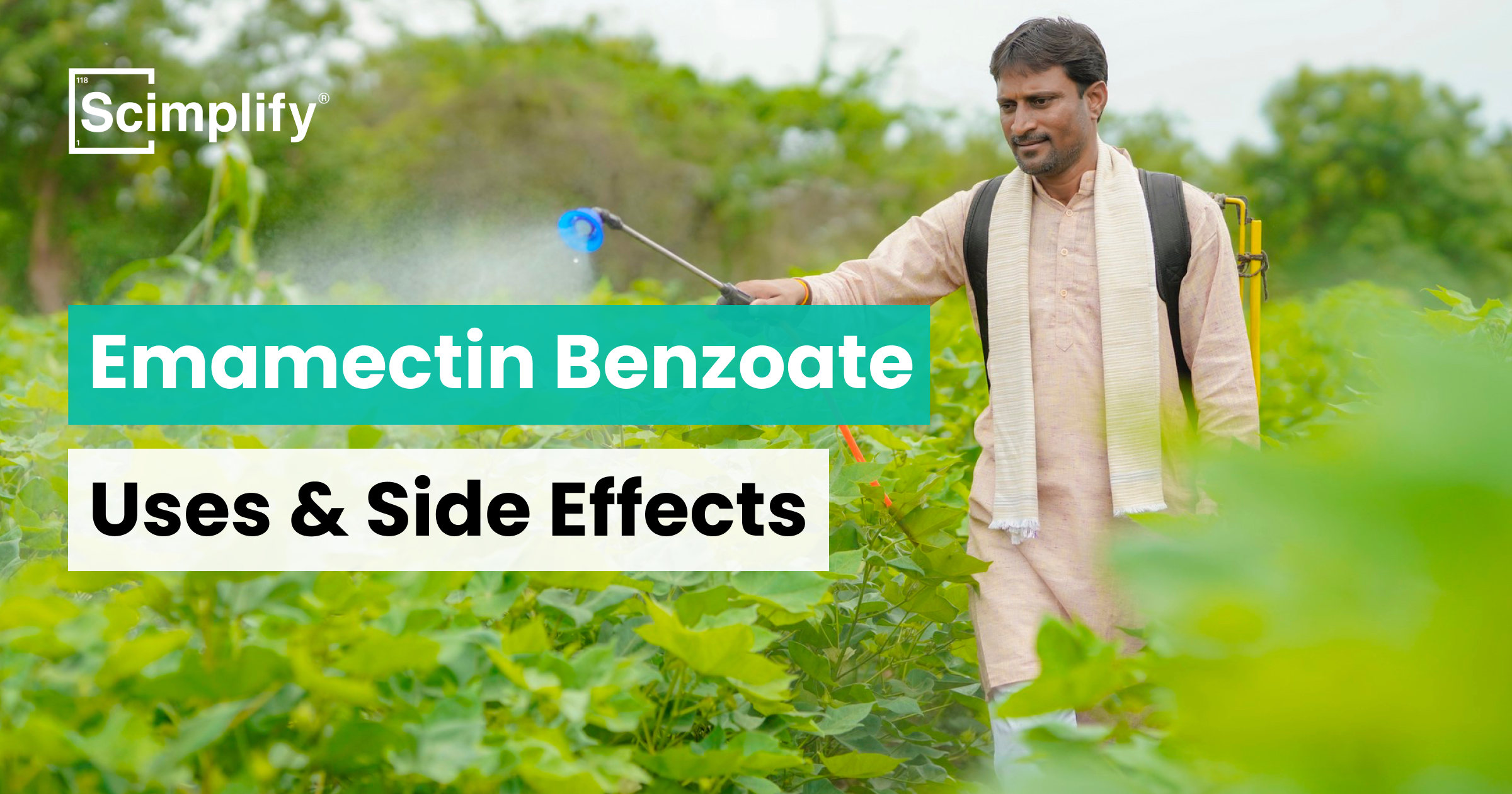What are Emamectin Benzoate’s uses and side effects?
Emamectin Benzoate is a powerful insecticide used to control caterpillars, borers, and thrips in crops like cotton, tea, grapes, and vegetables. Known for its low residues and effectiveness at small doses, it’s a go-to choice for sustainable pest management.

Emamectin benzoate 5% SG, a potent insecticide, is a derivative of Avermectin. It helps farmers control pest infestations, particularly those caused by caterpillars and leaf borers. Researchers know it for its long-lasting effects, low dosage, and minimal environmental residue. It works by disrupting the nervous systems of the pests. Farmers worldwide rely on it for sustainable pest control.
Top 10 Uses of Emamectin Benzoate
Managing cotton lepidopteran insects
Emamectin Benzoate works against bollworms and larvae that attack cotton crops. It attacks their nervous system, stopping them from reproducing. This helps farmers preserve yields year after year.
Pest control in pulses
Emamectin benzoate controls pod borers in green gram, pigeon pea, and chickpea. There need not be excessive amounts of chemicals in the field for it to reach hidden pests.
Toxic to Aquatic life
Emamectin has low residue levels. It meets international export standards, making it valuable to grape growers. Farmers use it to control pests, such as leafrollers and thrips. These pests harm grapes, lowering their quality for export.
Managing the Tea Estate Caterpillar
Emamectin benzoate has a low MRL and is used on tea plantations to control tea tortrix and caterpillars. It also breaks down easily, making it perfect for spraying. Tea is a crop that is sensitive to residue.
Protecting Vegetable Crops
Farmers use Emamectin benzoate to combat mites and fruit borers. Spraying it ensures healthier harvests and improved pest control by spreading across both sides of the leaves.
Application in Wood Protection and Forestry
Emamectin is used to prevent wood-boring insects and safeguard valuable trees, such as pines. It works well against pests like engraver beetles. It has even demonstrated efficacy against nematode-caused pine wilt disease.
Management of Pest Resistance
Integrated Pest Management (IPM) programs include Emamectin because it is resistant to older pesticides. It supports resistance management techniques in various crops.
Latin American Soybean and Maize Pest Management
Farmers in Brazil and Argentina control insects in maize and soybeans. It is conducive in situations where resistance issues have caused traditional chemicals to fail.
Use in Exporting High-Value Crops
Export-oriented crops, such as tea and grapes, adhere to stringent international regulations. Emamectin is an excellent option for high-value crops, as it is compatible with heavy farming due to its low toxicity and short pre-harvest interval.
A Mainstay of IPM Courses
Emamectin benzoate is now a widely adopted sustainable IPM farming method worldwide. It has a low environmental impact and a negligible effect on beneficial insects (when used correctly).
Industries That Use Emamectin Benzoate
- Agriculture
- Horticulture
- Forestry
- Agrochemical Manufacturing
- Export Crops Cultivation
- Integrated Pest Management (IPM)
Side Effects of Emamectin Benzoate
Mild toxicity to humans
Emamectin is mildly toxic. Too much exposure can cause neurotoxic effects. Leading to symptoms such as tremors, dizziness, and pupil dilation.
Can irritate the eyes and skin
Farmworkers may get mild eye discomfort or skin irritation while handling concentrated formulations. However, it can be avoided by wearing gloves and goggles and by thoroughly cleaning after use.
High Doses of Neurotoxicity
Studies show that animals may experience neurotoxic effects from prolonged exposure to high levels. This ensures that usage stays within safe bounds. Regulatory bodies have established NOAELs (No Observed Adverse Effect Levels)
Danger to Aquatic Life
Emamectin Benzoate is toxic to aquatic life, including small fish and crustaceans. Without adequate buffer zones and drift control measures, it is not recommended to spray it near water bodies.
Damages the Pollinator
Even though it is less harmful than broad-spectrum insecticides, emamectin can still harm parasitoids and bees. Careful timing of their application is important for protecting beneficial insects.
Concerns About Soil Residue
Emamectin can persist in soil for up to 30 days, depending on the circumstances. Although it doesn't move around much in soil, repeated applications that aren't rotated can cause microbial imbalance.
Possible Aquatic Species Bioaccumulation
Fish and shrimp may accumulate the insecticide if it washes into ponds or streams. Long-term risks result from this, particularly in areas with a high concentration of aquaculture.
Regulations in Tight Markets
The use of emamectin is restricted to high-value or forestry applications in developed markets such as the US and the EU due to stringent regulations. Adhering to local compliance guidelines is crucial.
Final Thoughts
Emamectin Benzoate insecticide is a strong, low-dose treatment that controls pests in critical crops globally. It's getting popular because of its compatibility with sustainable farming and IPM techniques. Even though it is effective, it must be handled with caution in order to protect humans, pollinators, and aquatic life. When applied carefully, it provides a dependable, targeted insecticide for high-value and large-scale agriculture.

